Iowa barns, even the quirky ‘cone-head,’ open their doors to you
- Share via
There's a strong connection between the state of Iowa and its barns. The buildings vary widely in shape, color, style and size, but they all reveal the rich immigrant and farming history of the state.
Which is why every September about 100 barn owners across the state throw open their doors to welcome visitors to see their original and restored buildings for themselves.
Some barns have remained in the hands of the famiiies that built them, others have been passed on to new owners. Most have been lovingly restored, with help from the Iowa Barn Foundation, a nonprofit organization that provides fix-up grants to preserve these historic gems.
On Sept. 26 and 27, you can tour the barns from 8:30 a.m. to 5:30 p.m. each day. Plan your trip by what region of the state you want to cover -- and don't forget your camera. To get started, use this guide from the Iowa Barn Foundation 2015 All-State Tour
1. The Riessen Barn
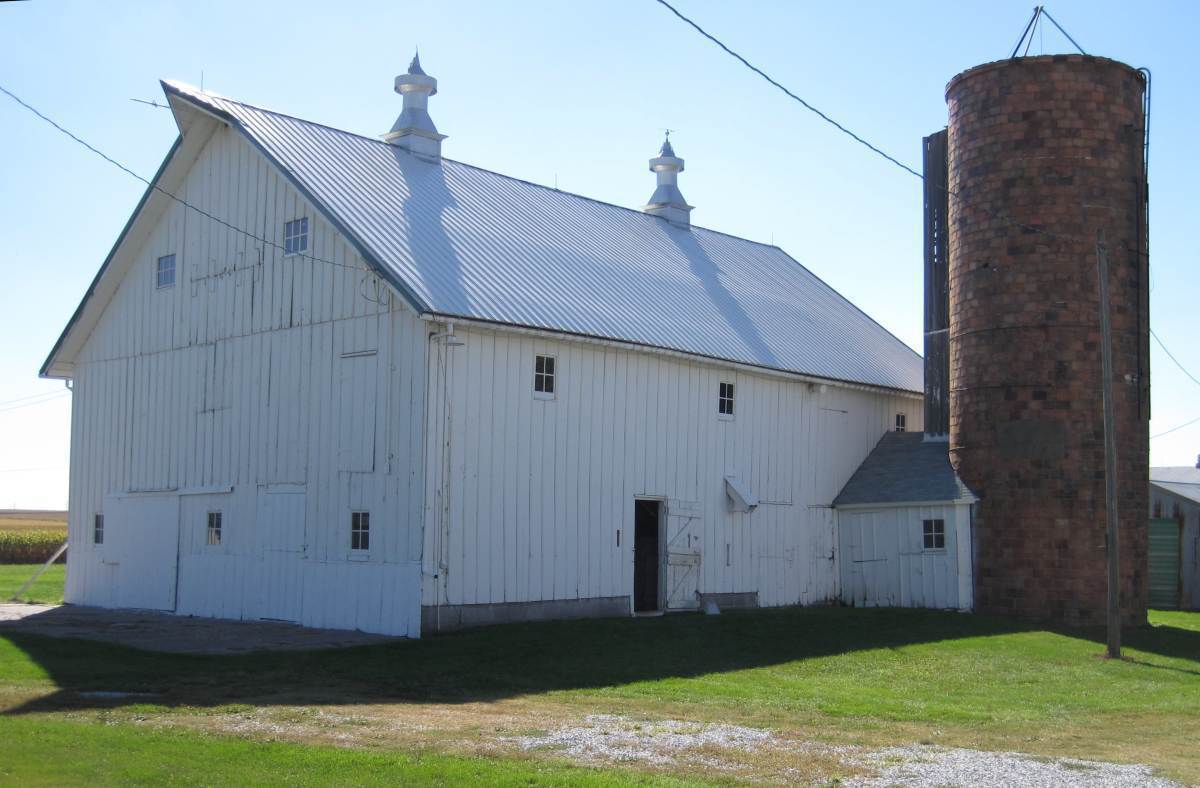
The Rissen barn in Stockton (southeast Iowa)
This handsome barn has space for 16 teams of horses on the east side of the barn and 26 milk cow on the west side. Silo and sheds were built in 1917, The west was added in 1961. Photo by Jeffrey Fitz-Randolph.
(Jeffrey Fitz-Randolph.)
This handsome barn is located in the town of Stockton in southeast Iowa. It can house 10 teams of horses on the east side and 26 milk cows on the west side. The silo and sheds were built in 1917; the building was added in 1961.
2. Gribble Barn
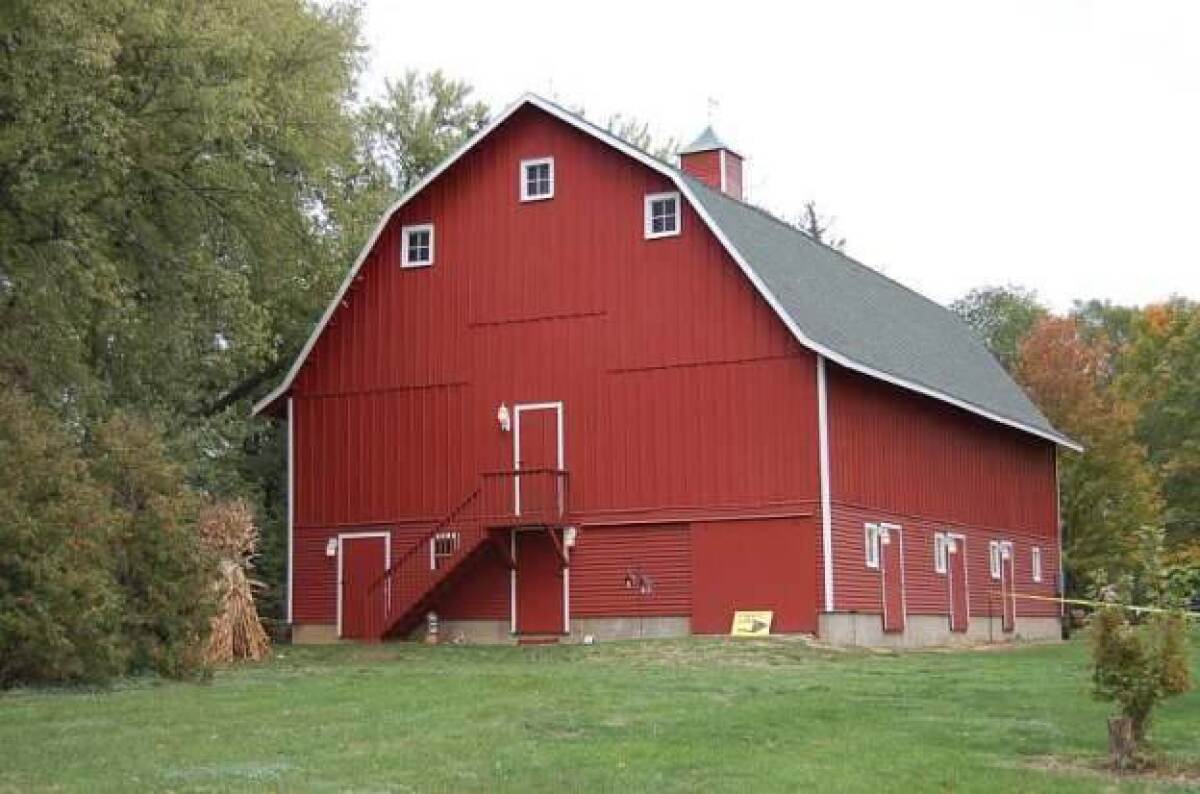
Gribble barn, Ft. Atkinson, Iowa
This barn is part of the Czech community , where Dvorak spent summers, in northeast Iowa. The elegant large red barn was built by Czechs and has remained in the family for generations. Photo by Sherry Gribble
(Sherry Gribble)
This barn is part of the Czech community in northeast Iowa. Composer Anton Dvorak spent at least one summer in the area and played the organ in the local church. This elegant large red barn that dates to the early 20th century was built by Czechs and has remained in the Gribble family for generations. The farm and the barn have been restored.
3. Kolsrud Barn
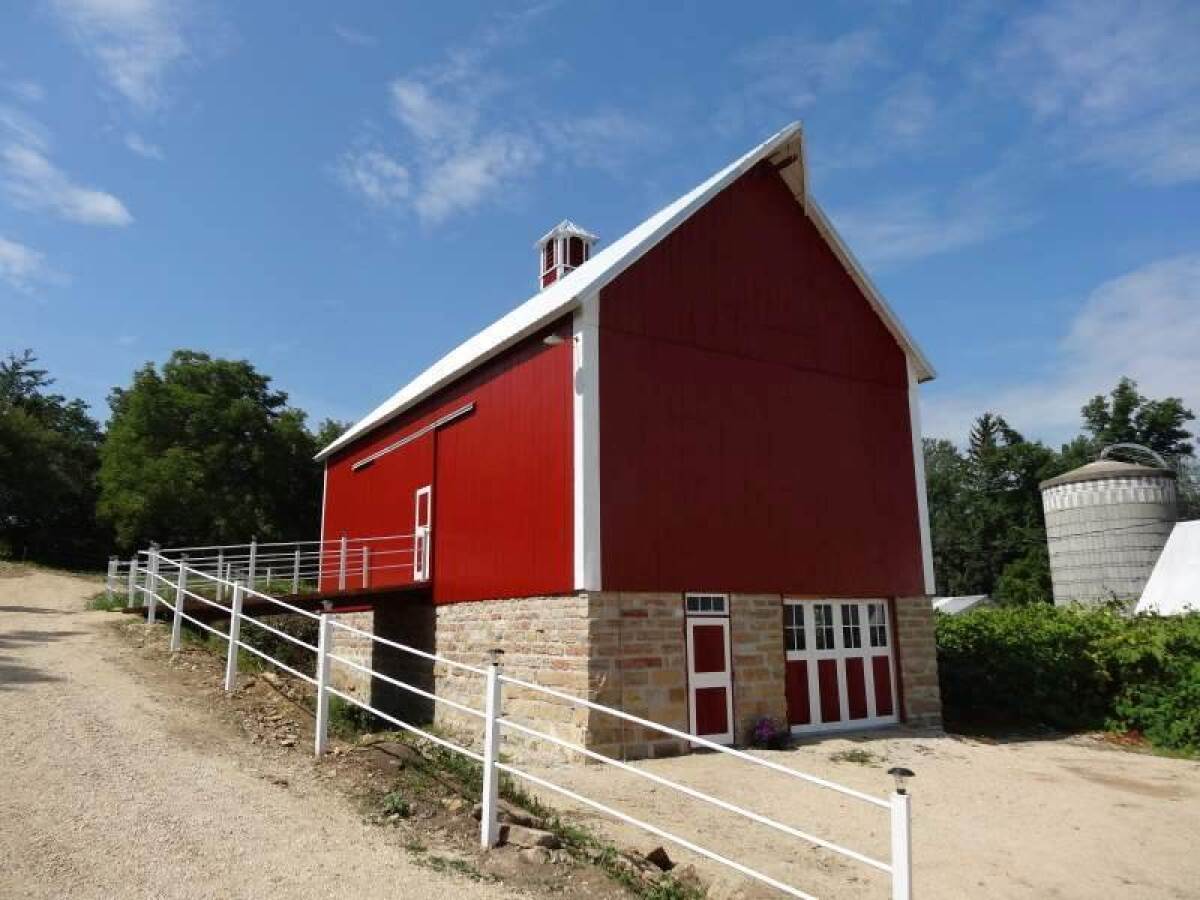
Kolsrud barn, Waukon, Iowa
Jacob Jacobson, arrived in Iowa from Norway in 1862 ,bought 80 acres for $500, and built the barn using timber and rock from the farm. Grant Kolsrud, fifth generation, used 150 gallons of paint when he recently restored the barn. Photo by Duane Fenstermann
(Duane Fenstermann)
Jacob Jacobson arrived in Iowa from Norway in 1862, bought 80 acres of land for $500 and built the barn in Waukon at the turn of the 20th century using timber and rock from the farm. Grant Kolsrud, fifth-generation owner of the barn, used 150 gallons of paint when he recently restored the barn.
4. Buck Barn
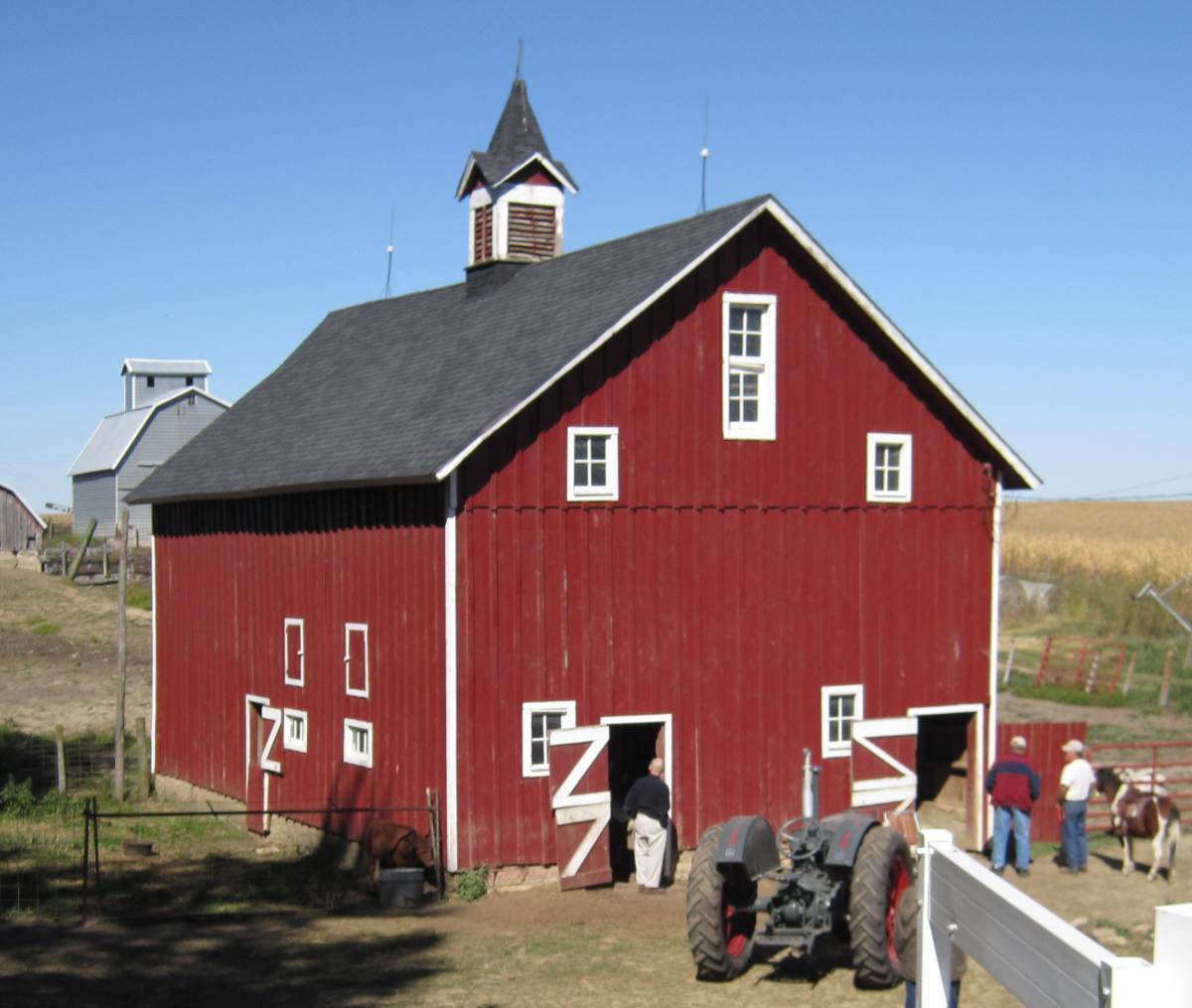
Buck Barn, State Center, Iowa.
Lovely turn-of-the-century barn has wooden track in the haymow. Cupola has the original bell. Barn has been in the family for four generations. Photo by Jeffrey Fitz-Randolph.
(Jeffrey Fitz-Randolph)
Lovely turn-of-the-20th-century barn in State Center includes a wooden track in the haymow, and the cupola still has the original bell. This barn has remained in the same family for four generations.
5. DeFries Barn
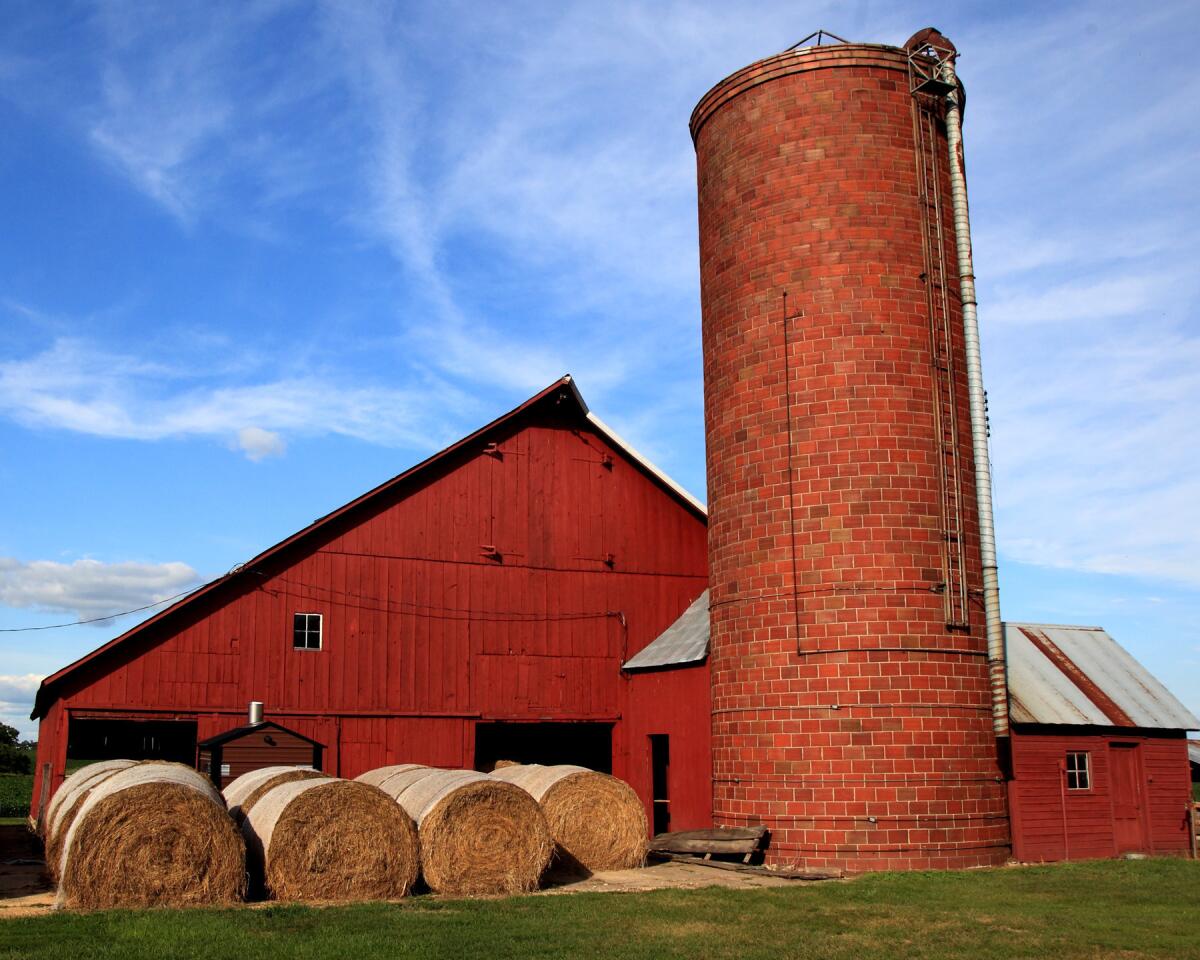
The DeFries Barn on the Doris and Jack Dyas Farm, 17929 232nd Avenue, Maquoketa (Jackson County) - Go north out of Andrew on Highway 62, then left on Y61- 250th Avenue (two miles) and left again on 180th St. Go 1/2 mile to first farm on left at 232nd Av. The 47 x 84-foot barn was built in 1885 by A.B. DeFries whose family settled in the area in the 1850s. It has post and beam pegged construction.
(Don Poggensee)
The barn in Maquoketa was built in 1885 by A.B. DeFries whose family settled in the area in the 1850s. The barn with post and beam pegged construction stands on the Doris and Jack Dyas Farm.
6. Conover Barn

Conover barn, 5315 190th Street, Holstein (Ida County) - From Holstein travel 1.5 mile west on US 20. Turn south on L67 and go three miles. Turn left on 190th. It is the first place on north side of road. Barn was built around 1900 and used by C.B. Conover and his son, C.B., Jr., for their outstanding Belgian draft horses. Harry Linn, Iowa’s secretary of agriculture, gave draft horse demonstrations here. (Award of Distinction).
(Don Poggensee)
This barn in Holstein was built around 1900. It provided a home to Belgian draft horses raised by C.B. Conover and his son, C.B. Jr. Harry Linn, Iowa's onetime secretary of agriculture, used to give draft horse demonstrations here.
7. Ferguson Barn
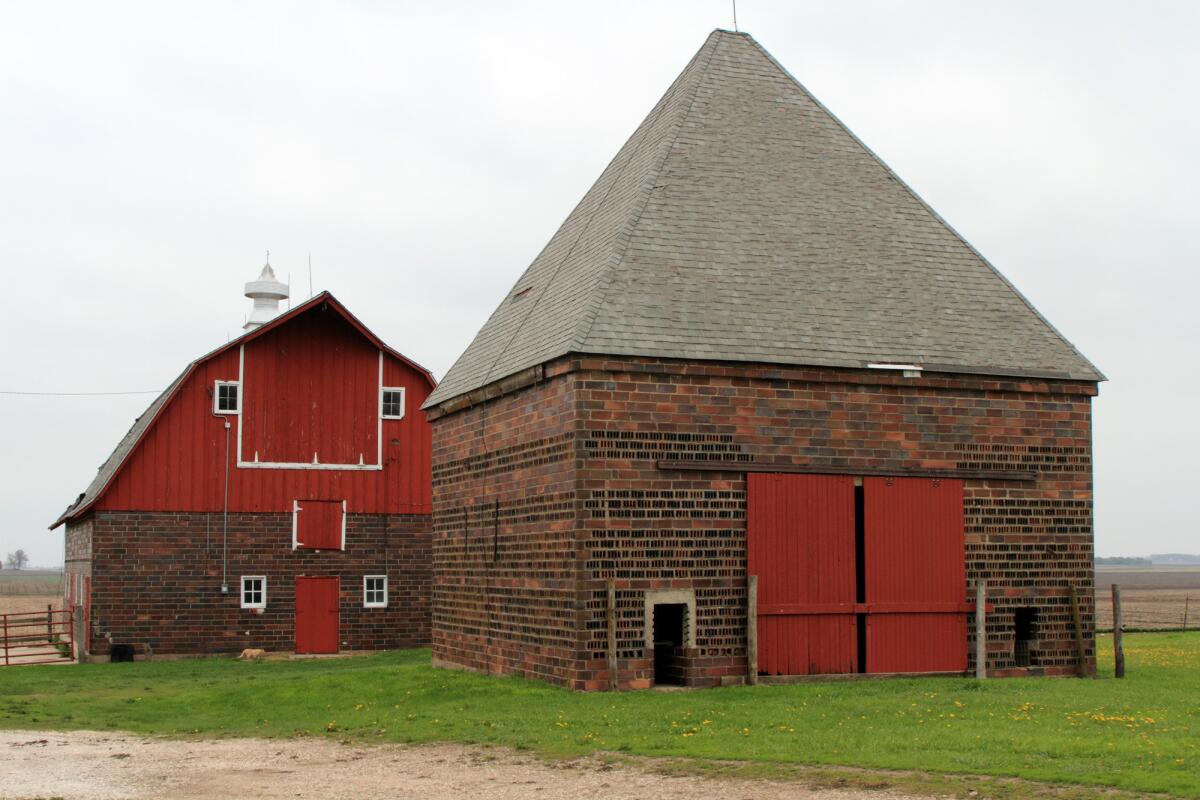
Ferguson barn, 40415 130th Avenue, Laurens (Pocahontas County) - Barn is 3.75 miles straight north of Laurens at 40415 130th Avenue. Barn and landmark “conehead” crib were built in 1912. Elevator still works.
(Don Poggensee)
The most notable thing about the barn in Laurens is its conically shaped crib, which makes it a landmark. The "cone-head" crib was build in 1912. You can tour the barn, which has an elevator that still works too.
Sign up for The Wild
We’ll help you find the best places to hike, bike and run, as well as the perfect silent spots for meditation and yoga.
You may occasionally receive promotional content from the Los Angeles Times.




